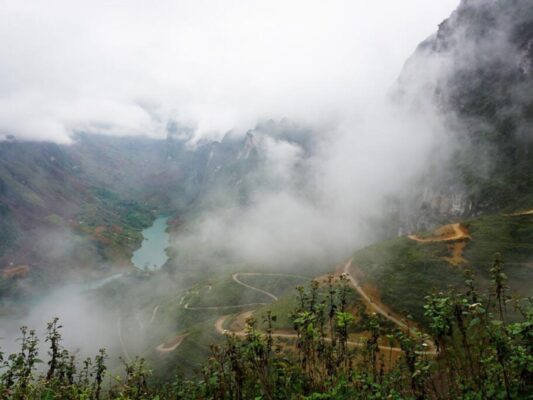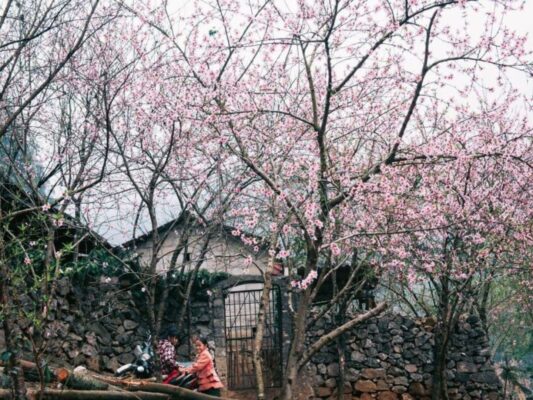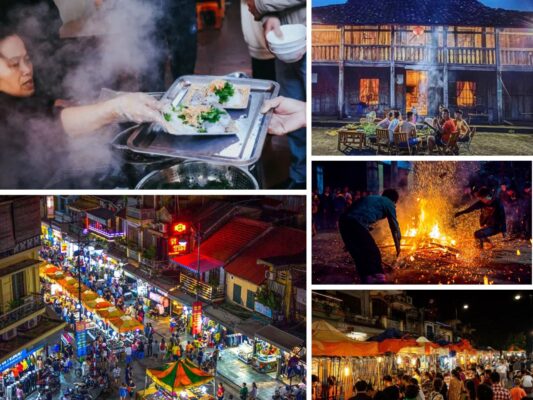Hmong Ethnic Group: Unveil Ha Giang’s Rich History
The Hmong ethnic group is the largest group in Ha Giang. They have a rich culture and live in the beautiful mountains of the region. Despite facing many challenges, the Hmong people continue to thrive and keep their traditions alive. If you’re curious to learn more about their way of life, their customs, and how they live in this stunning, keep reading. There’s so much to discover about the Hmong people in Ha Giang!
History of Hmong Ethnic Group
Around 4,000 to 5,000 years ago, the Hmong and Dao ethnic groups were forced to leave their homeland, San Miao, in China by the Han people. After that, they faced many wars and long journeys over thousands of years. In the late 17th and early 18th centuries, they started moving into Southeast Asia. The Hmong people mainly live in provinces like Ha Giang, Son La, Dien Bien, Lao Cai, Lai Chau, Yen Bai, Thanh Hoa,…
9 Main Features of Hmong Ethnic Group
The Hmong ethnic group has unique features that make them special. Here are 9 main aspects of their culture, traditions, and way of life.
Large Population
The Hmong are one of the largest Ha Giang ethnic minorities. There are more than 1 million H’mong people living in Vietnam today, mostly in the northern mountainous areas like Ha Giang, Lao Cai, and Sapa. The H’mong also have large communities in Laos and southern China. It’s believed that the H’mong people originally came from the Yellow River region in China.
Traditional Food

Here are some typical Ha giang food of the Hmong ethnic group who have lived in Ha Giang:
- Men men: A maize cake made from corn flour, often eaten as a simple and filling meal.
- Rice and corn wine: Homemade drinks made from rice and corn, popular in Hmong households.
- Thang co: A hot pot made with a mix of horse or goat meat and internal organs, usually enjoyed in large gatherings.
- Sticky rice: A staple in every Hmong meal, served with almost every dish, either steamed or grilled.
- Hmong sour soup: A flavorful soup made with local herbs, vegetables, and sometimes meat, perfect for the cold mountain weather
Subgroups
The Hmong ethnic group are divided into subgroups based on characteristics, costumes, and dialects, including White Hmong, Black Hmong, Green Hmong, and Flower Hmong.
Traditional House
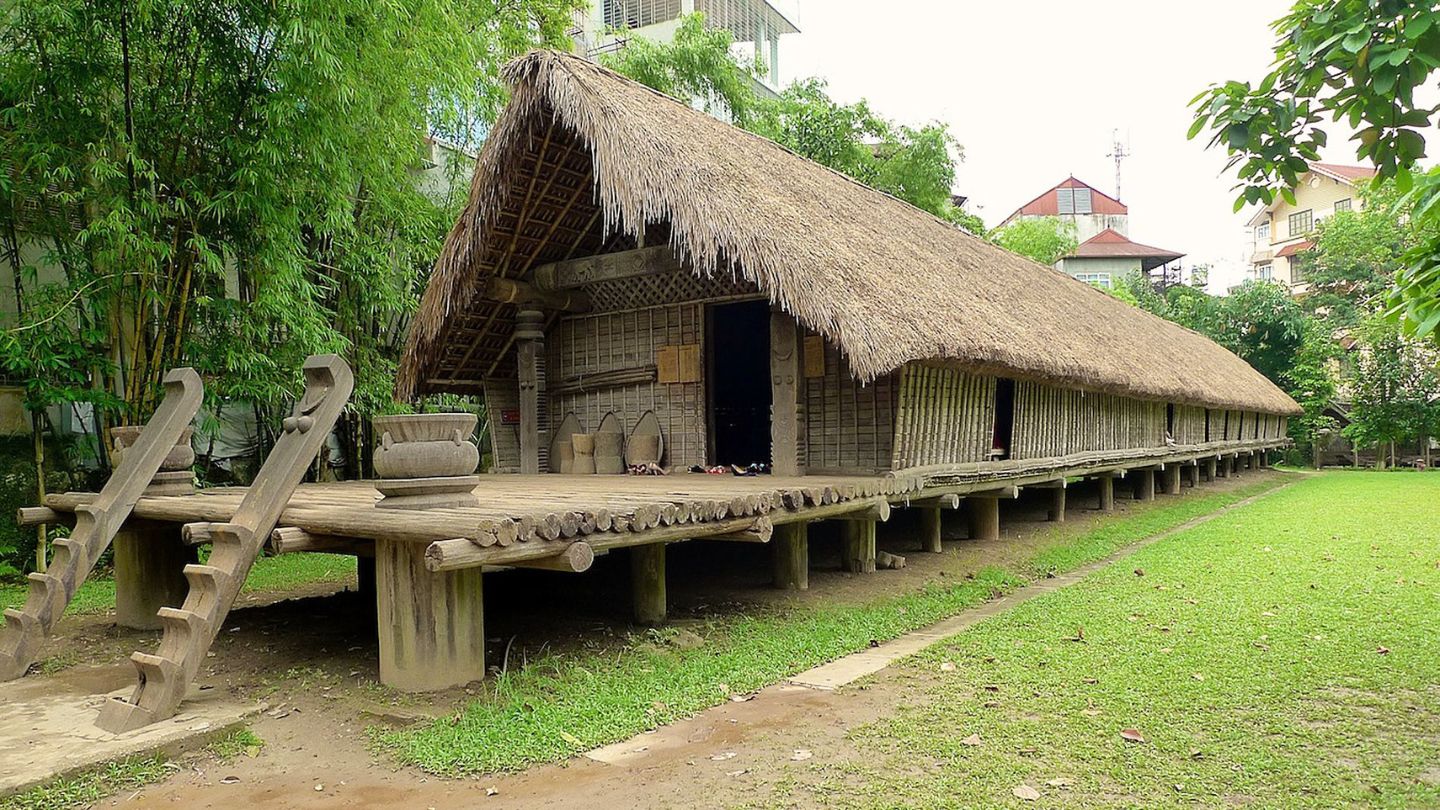
Houses of the Hmong ethnic group are special and made to fit their environment. Most of their houses are built on stilts, with wooden walls and thatched roofs, or made with earth. A house usually has three main rooms and two small side rooms. There are two or three doors, and the middle room has an altar. In the mountain areas, each house is separated by stone walls about 2 meters high, giving them space and privacy. These houses show the Hmong’s connection to nature.
Traditional Costume
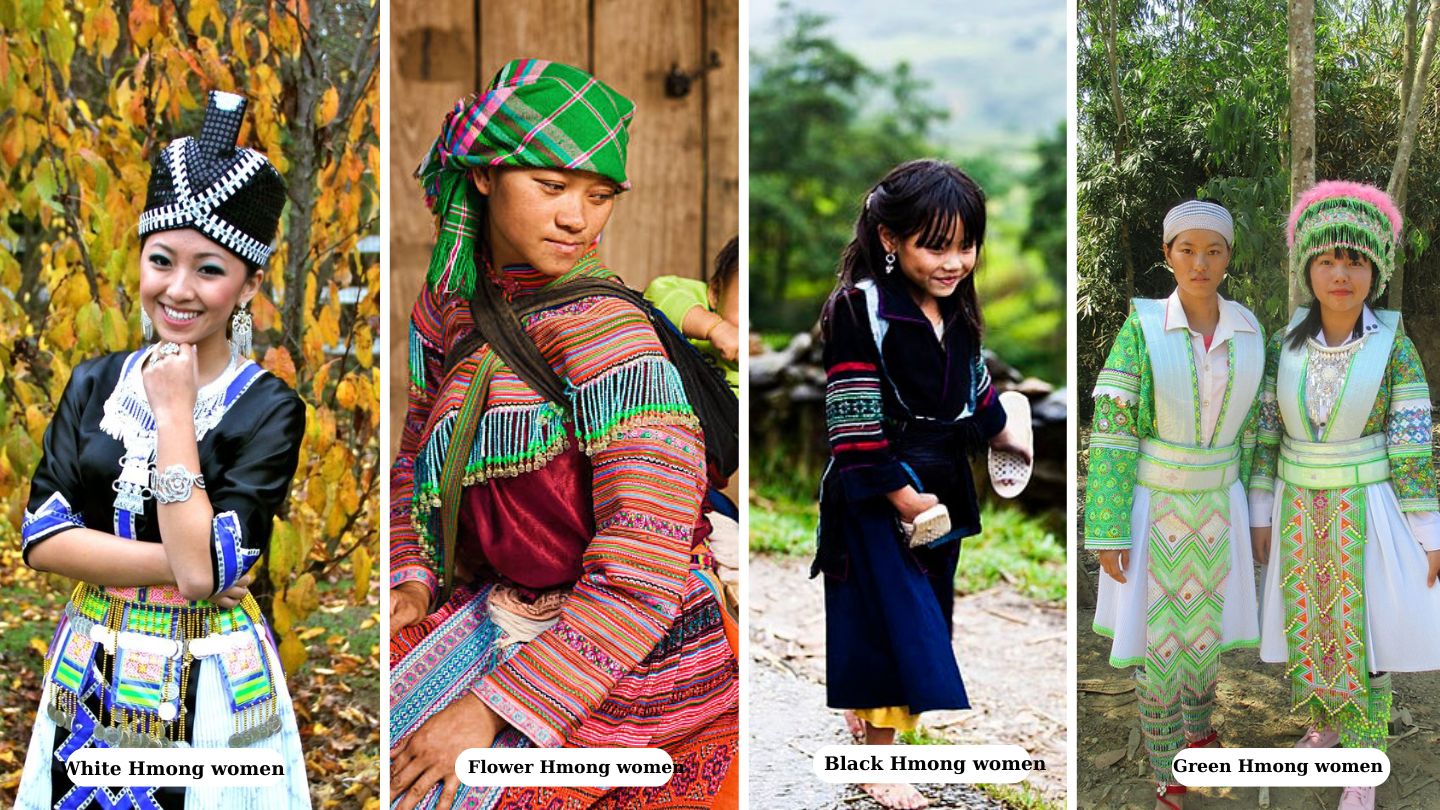
The traditional costumes of the Hmong ethnic group are bright and different for each group.
- White Hmong women grow flax and weave linen. They wear white skirts with V-neck collars and embroidered patterns on the sleeves. They shave part of their hair and wear wide-brimmed scarves around their heads.
- Flower Hmong women wear indigo skirts with patterns made from beeswax. Their tops are tank-style with colorful embroidery on the shoulders and chest. They braid their long hair and sometimes wear a wig.
- Black Hmong women wear skirts made of indigo fabric, printed with beeswax patterns, and V-neck shirts.
- Green Hmong women wear tube skirts. Married women arrange their hair in a chignon or bun, held with a bone or animal hoof comb. Their clothes are decorated with colored fabric pieces or embroidered patterns like snails, squares, or crosses.
Hmong men wear black clothes, short blouses, long pants, and often a headscarf. These costumes show the Hmong people’s creativity and culture. They are an important part of their identity and heritage.
Traditional Festivals
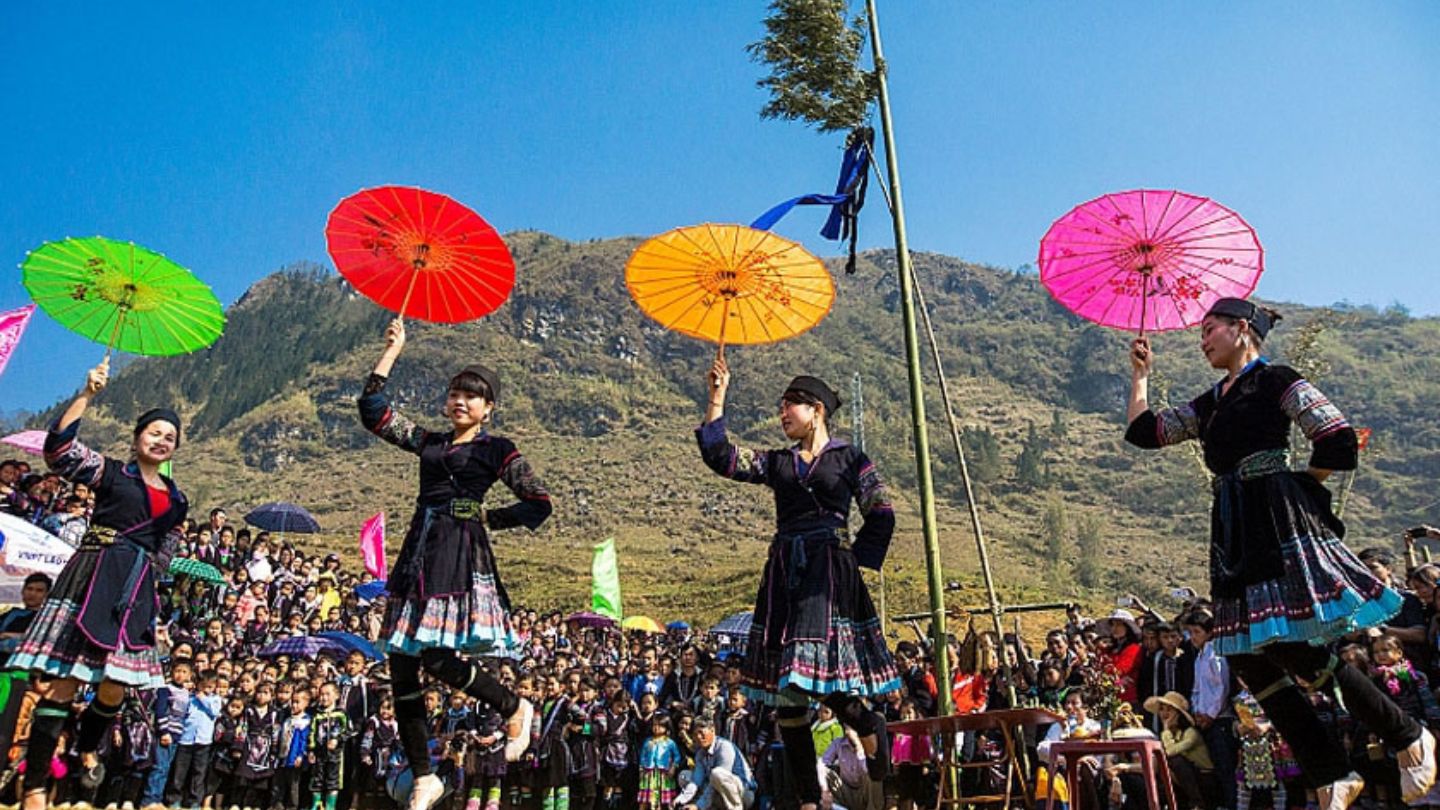
The Hmong ethnic group has many types of art, like folk songs, love songs, playing the mouth harp, blowing a leaf horn, and dancing with the khèn. They also play traditional games such as stick pushing, shuttlecock throwing, crossbow shooting and stilt walking.The Hmong celebrate special festivals every year, like the Gầu Tào Festival, the Khèn Mông Festival, and the Hmong Ethnic Cultural Day. The Gau Tao Festival is very important. People pray for children, good health, and a good harvest. The Khèn Mông Festival shows the Hmong people’s spiritual beliefs.
Religion
The Hmong ethnic group believe in worshiping God and their ancestors. They follow Animism, which means they think everything has a spirit. When something or someone dies, their spirit becomes a ghost. For example, when a person dies, their spirit becomes an ancestor’s ghost, and the family prays to them at an altar in the home.
The Hmong also follow parts of Confucianism, Taoism, and Buddhism, but these beliefs mix with Animism. A shaman helps connect people with spirits. Besides worshiping ancestors, each family also prays to spirits like kitchen ghosts, door ghosts, and chamber ghosts. They also honor the ghosts of their family clan. In the village, people worship the guardian and earth spirits. The Hmong also have special rituals to pray for good weather, like rain or sun, and to protect crops from insects.
Agricultural Activities
The Hmong people have different ways of earning a living. One of the main activities they do is agriculture. They practice both shifting cultivation and sedentary farming. In shifting cultivation, the Hmong clear a small piece of land in the forest to grow crops like maize, wheat, and barley. After a few years, they move to a new area because the soil becomes less fertile. Sedentary farming consists of crops growing on terraced fields, which are carved into the mountainside. Maize, wheat, and barley are common crops grown in these fields, which are important to their diet and economy.
Traditional Crafts
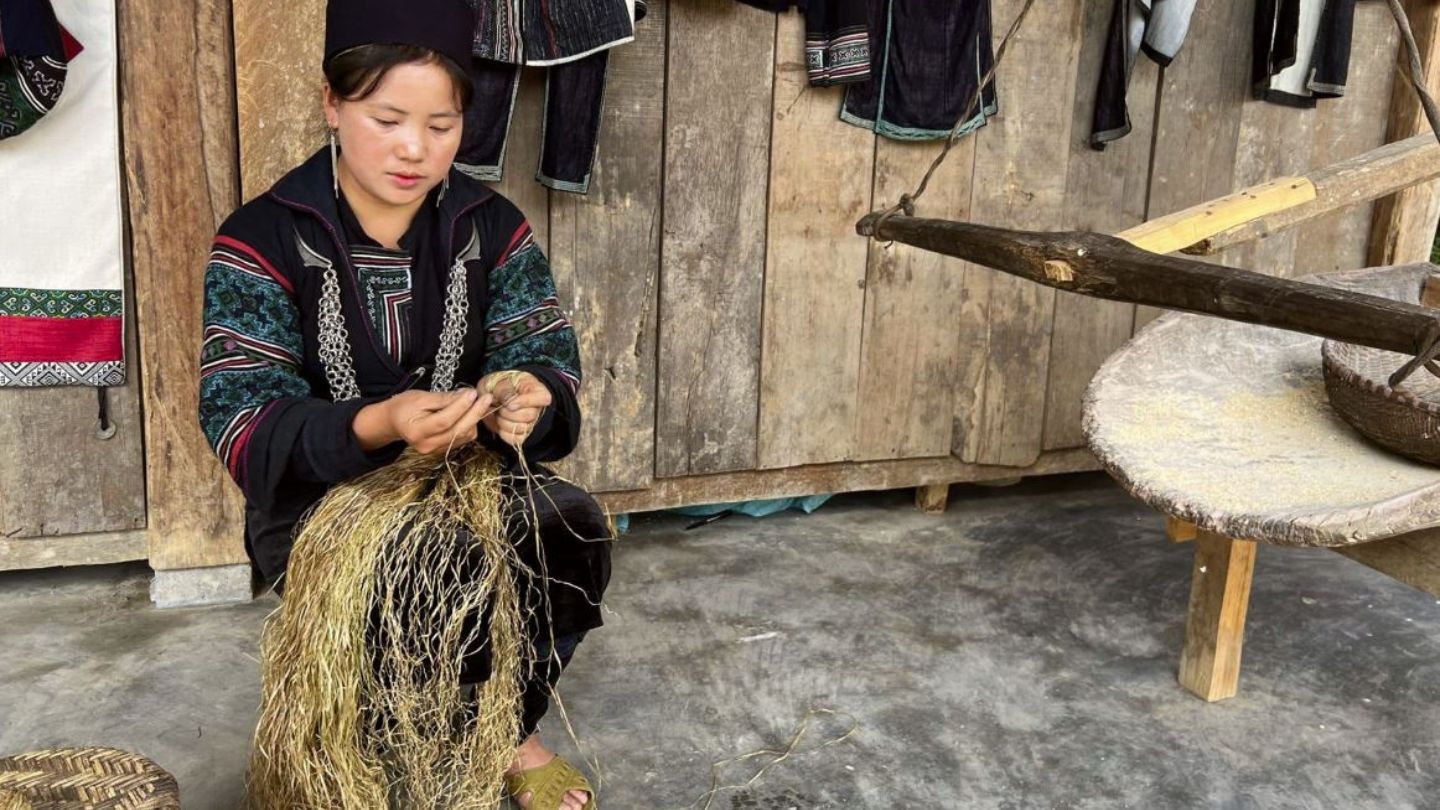
In addition to farming, the Hmong ethnic group are known for their traditional crafts. They are skilled in knitting, woodworking, and weaving linen. Weaving linen is a very important craft for the Hmong, especially for making traditional costumes. These costumes are colorful, with beautiful embroidered patterns that show their cultural identity. The Hmong also use their woodworking skills to create tools, furniture, and even items like baskets for daily use.
Conclusion
Now that we’ve learned about the Hmong ethnic group in Ha Giang, we can better understand their unique culture and lifestyle. Despite the many challenges they face in the mountains, the Hmong people continue to live strong, holding onto their traditions. Their story is one of resilience and pride. Ha Giang Nomad hope this article has given you a deeper appreciation for the Hmong community and their way of life in Ha Giang.

